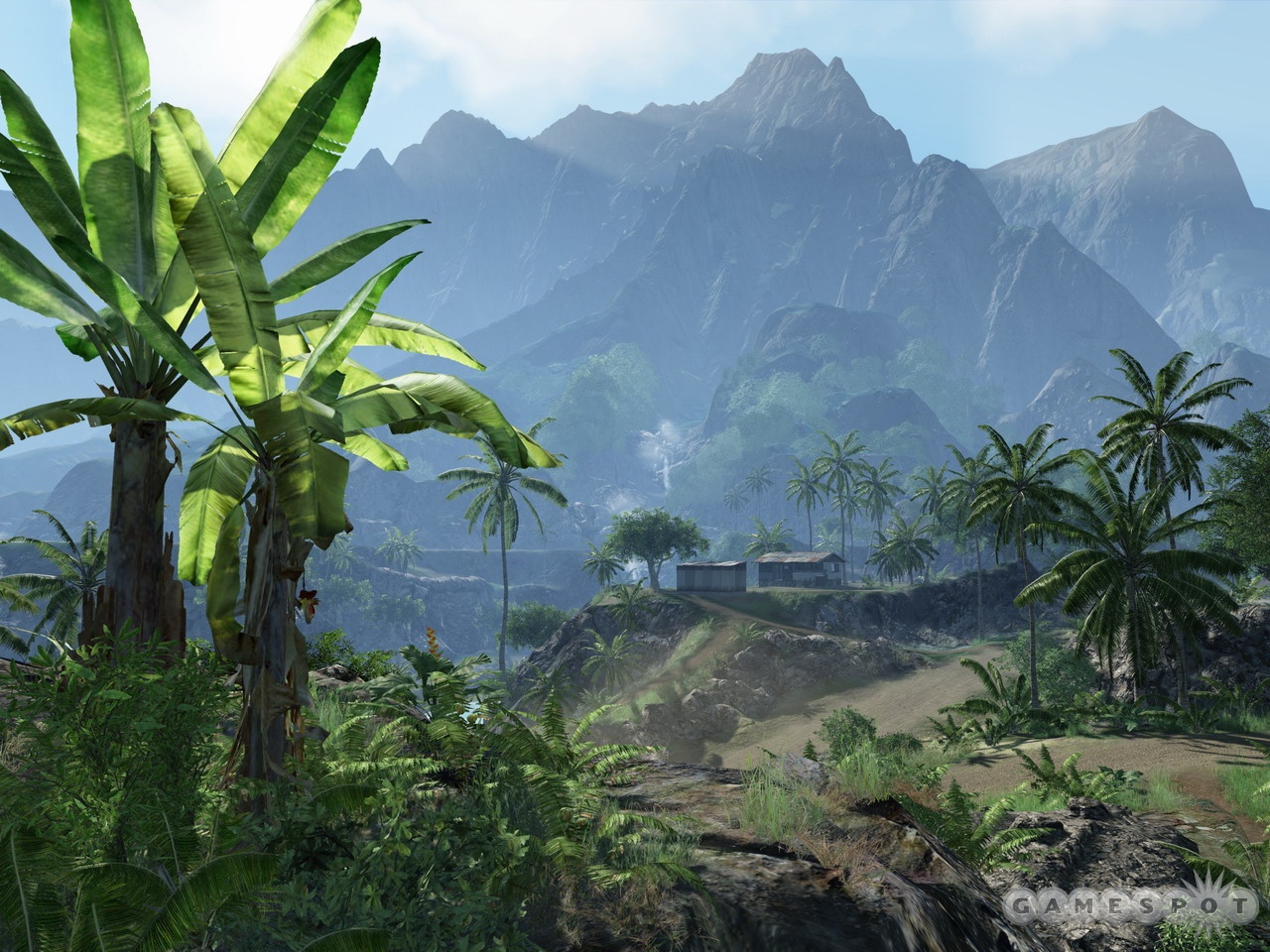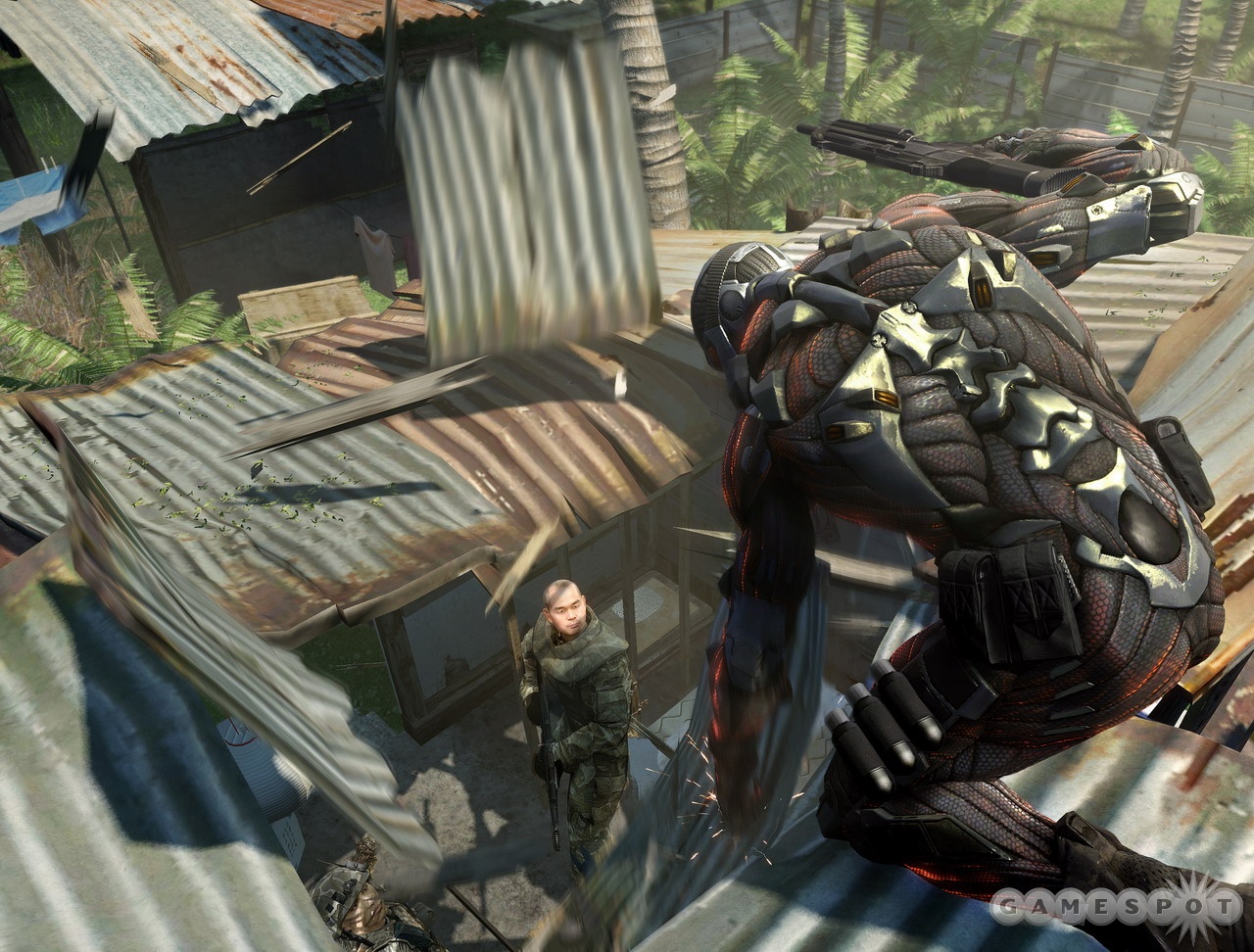Crysis Q&A - Graphics, DirectX, and Windows Vista
Crytek's Cevat Yerli discusses what's going under the hood in this graphically impressive PC shooter as well as how the game is shaping up for Direct3D 10 and Windows Vista.
While first-person shooters of yore were arcade-style games that put big guns in your hand and tasked you with dashing around various corridors from a first-person perspective, blasting everything that wasn't you, times have changed. The kind of gameplay players have come to expect from these games has grown and developed, and technology has definitely advanced. For instance, consider Crysis, the impressive-looking shooter from Crytek and EA Games. This shooter will pack a powerful punch in terms of advanced graphical effects, especially since it's being developed with Microsoft's soon-to-be-released Direct3D 10 graphics environment (also known as DirectX 10) and the upcoming Windows Vista operating system in mind. Crytek CEO Cevat Yerli sat down with us to discuss the kind of technology we can expect to see in the game and how Crysis is being geared up for Vista.
GameSpot: Could you give us an update on the game's development? What parts of the game is the team working on now?

Cevat Yerli: We are nearing alpha status, which means full feature and content completion on the entire project, with a solid pass on balancing. That is valid for the single-player and multiplayer experience. We are very excited. Crysis is shaping up as we imagined it. Stay tuned, it's almost there.
GS: Tell us about the special features in Direct3D 10 that Crysis will make use of. For instance, how, if at all, will the game make use of Shader Model 4.0? Where will we see instances of this new technology in the game--enhanced animated reflections on shiny surfaces, more-detailed textures, and so on?
CY: In general, we utilize the new interface of D3D10 to get better performance. We also use geometry shaders with texture arrays to accelerate shadow map and particle generation. We now can develop render algorithms easier because of the big guaranteed feature set of D3D10. For example, with DX9, the limited number of interpolators often prevented shader optimizations. There are many more useful features we want to utilize as well, such as texture lookups in vertex and geometry shader, stream out, and integer math. D3D10 hardware is now required to do high-quality texture filtering, which can result in better shading quality (such as specular effects or reflections).
GS: We understand that as part of Direct3D 10's development, Microsoft has apparently made compliance requirements stiffer for graphics hardware manufacturers to have their new GPUs Direct3D 10-certified. How, if at all, have these increased requirements helped Crytek optimize the game for first-generation Direct3D 10 GPUs?
CY: It did not make a tangible difference for our development, really. We are used to working through these types of issues, but at the same time, certain simplifications for developers did not impact us too much.
GS: Tell us about how Crysis will continue to make the most of existing DirectX 9 hardware for users who can't upgrade their computers in time for the game.
CY: If you have a high-end DX9 card with an equal level of CPU and memory--basically today's "gamer rig"--you will enjoy Crysis with close-to-D3D10 fidelity. Don't forget that for a long time, we ran the game only on DX9 hardware, even though people thought it was D3D10. You can be sure your high-end gamer rig will satisfy your expectations--but with D3D10, you will surpass them.
GS: Due to various scheduling and ship-date changes, Crysis is in a rather challenging position of being one of the first next-generation PC games to have to straddle the gulf between DirectX 9 and Direct3D 10 (and implicitly, the gap between Windows XP and Windows Vista). Aside from DirectX compliance, what are some of the other hurdles the team has faced, and how are they being addressed?
CY: That indeed is an annoying burden, but a necessary evil. It's our job to satisfy our gamers. We had similar challenges in the past with DX8, 9, and with 32/64 bit, but this is a much larger step that we have to help bridge. But I am happy to say that we manage to push both to maximum capacity usage; we're pushing quality in both [DirectX platform] directions.
GS: Since Crysis, Vista, and Direct3D 10 will all be launching in 2007, is Crytek banking on consumers having high-end PC hardware? Any plans, for instance, for Crysis to make specific use of other advanced consumer hardware features, such as dual-core processors or even physics processors?
CY: We have already implemented within CryEngine 2 our multicore technology, so out of the box Crysis does configure itself toward single-core, dual-core, quad-core, or multicore configurations alongside DX9, 10, XP, Vista, 32 bit, and 64 bit. We do not plan to use physics processors at this stage, though, since we did not see the direct beneficial impact in our software. Our in-house physics engine runs fast enough and spreads over multicore CPUs if needed to make Crysis a next-gen experience on that front.
GS: Is Crytek taking advantage of Microsoft's XNA framework in developing the game? Since one of XNA's most highly touted features is cross-platform compatibility, could working with the software open the door to console versions of the game?

CY: One particularly cool aspect we have been using recently is the unified input system, so you will be able to experience Crysis with the Xbox 360 controller on your living room TV attached to a high-end PC rig with D3D10. No console game will be able to stand in comparison against that.
GS: Finally, is there anything else you'd like to add about the technology that's going into Crysis to prepare it for use with both DirectX 9 and Direct3D 10, as well as for Windows Vista?
CY: Yes. Our high-end DX9 and XP experience was meant to offer you all our goals in terms of a cinematic and realistic experience, with gameplay mechanics pushing choices and freedom to the maximum. I want to reemphasize this is still true. D3D10 is going to take that whole experience and help us exceed those initial goals.
GS: Thanks, Cevat.
Got a news tip or want to contact us directly? Email news@gamespot.com
Join the conversation